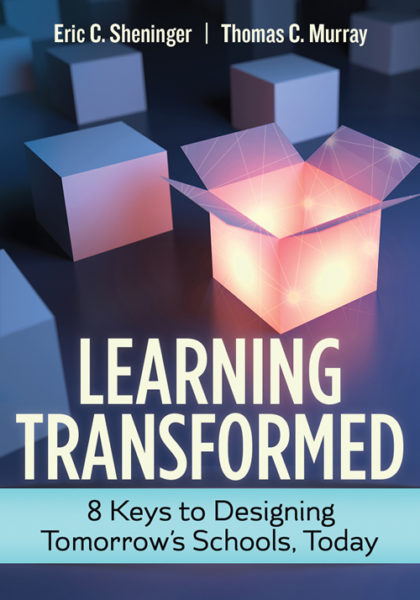“Be the leader you wish you had.” —Simon Sinek
Professional learning in many districts must undergo radical reform, from a model that’s outdated and ineffective to one that’s personal, empowering, and owned by the learner. How can we create such a culture of ownership and empowerment?
1. Clearly define and articulate the vision.
Do all stakeholders understand the district’s direction? How should instruction improve with the time that’s invested? How will students benefit? Can all staff members articulate the vision? Do staff members help formulate that vision? Is the vision only one year or more long term?
2. Model: Practice what you preach.
How school leaders run faculty meetings and in-service time should be a direct reflection of the type of instruction they seek in the classroom. Anything else is hypocritical. Learn alongside your staff members and model expectations for them. Invest time in professional learning—not managerial tasks. Model and share your learning throughout the process.
3. Learning should be anytime, anywhere.
Today’s Netflix generation of students expects content to be available on demand: anytime, anywhere. As such, and to mirror today’s instructional expectations, today’s school leaders must work to provide and empower anytime, anywhere learning opportunities for teachers. From professional-learning modules to social media, opportunities for learning through high-quality digital content must be available for both kids and teachers.
(Next page: More steps to creating a professional-learning community)
4. Balance districtwide initiatives with the need for learning that’s personal.
We expect teachers to meet students where they are or to teach at the speed of learning, yet current practice for teachers is often a far different approach. Maintain a laser-like focus on the vision while meeting the individual needs of staff members through a more personal approach to learning, which happens only by abdicating some control.
5. Move from hours-based to outcome-based accountability.
What’s more important: hours or learning? When it’s seat time we measure, it’s the hours we value. But is that what’s best for personal growth? Districts that have success in this area are moving professional learning to an integral part of the supervision process in which teachers have voice, choice, and ownership in their learning. Teachers should work with supervisors to develop goals that specifically outline a plan for both short- and long-term growth, and then be held accountable for results. Districts must aim to foster a culture of professional-learning communities, job-embedded learning, and peer coaching to support teachers in the growth process. Supervision conversations must move from “I attended . . .” to “I learned and then implemented . . .” Nontraditional forms of professional learning such as Edcamps, social-media conversations, and using digital tools and apps to connect and communicate are valuable experiences for educators. We should no longer hear or say, “That doesn’t count.”
6. Shift the culture of professional learning.
All staff must recognize that professional learning shouldn’t be viewed as set calendar days per school year but as an ongoing, daily culture of learning. Professional learning is a personal responsibility—not just a handful of after-school workshops. Stop spending the time. Start investing it. Do so every day.
7. Empower staff to design their own learning.
Districts have incredible expertise sitting in their classrooms, yet they often underutilize their staff in the professional-growth process. Find ways to grow teacher leadership and build capacity in your staff. We trust teachers with children every day, yet we often don’t trust them enough to help design their own learning. School leaders who are fearful of abdicating some of this control may very well be standing in the midst of a toxic culture.
8. Solicit teacher feedback.
Teacher voice is prominent in all effective professional-learning models. Too often, professional development is something that teachers feel is done to them; it’s not something they are a vital part of. Districts need to seek out teacher feedback to see what’s working, what’s relevant, and what areas still need to grow. Is what you’re doing valuable in the eyes of your staff members? What do your best people think? Measure the effectiveness of your model by soliciting feedback from all stakeholders on a regular basis. Adjust and personalize accordingly.
9. Break down silos.
Cross-district collaboration. Traditionally, a highway will divide the types and quality of professional-learning opportunities that are available for educators. Our imaginary district borders are known to create educational silos, limiting access and opportunity on both sides. Districts that are leading the way in this area are breaking down the traditional barriers of space and time and working collaboratively with surrounding districts to leverage additional and higher-quality professional-learning opportunities for all.
10. Grow your network.
Social media and tech tools offer global networks of educators looking to connect and grow professionally—at all hours of the day. It’s not about the tool, though; it’s about the network and learning community. Students need school districts to break through the confines of traditional borders to seek opportunity. As has been shared on social media by my good friend George Couros, “Isolation is now a choice that educators make.”
For learning to be transformed, professional learning must be a core value of all stakeholders and must be an ongoing, outcome-based process that is embedded into the very fabric of a school’s culture where accountability and responsibility for growth is high. Our students need and deserve this type of mindset.
You are part of the solution.
[Editor’s note: A portion of this article is an excerpt from the new ASCD book, Learning Transformed: 8 Keys to Designing Tomorrow’s Schools, Today. Learning Transformed comes with a free study guide for school leaders. Continue the conversation online using #LT8Keys.]
- High school students say AI will change the workforce - April 18, 2024
- Motivating students using the Self-Determination Theory - April 17, 2024
- Michigan Virtual’s statewide workgroup releasing AI guidance for K-12 educators - April 17, 2024


